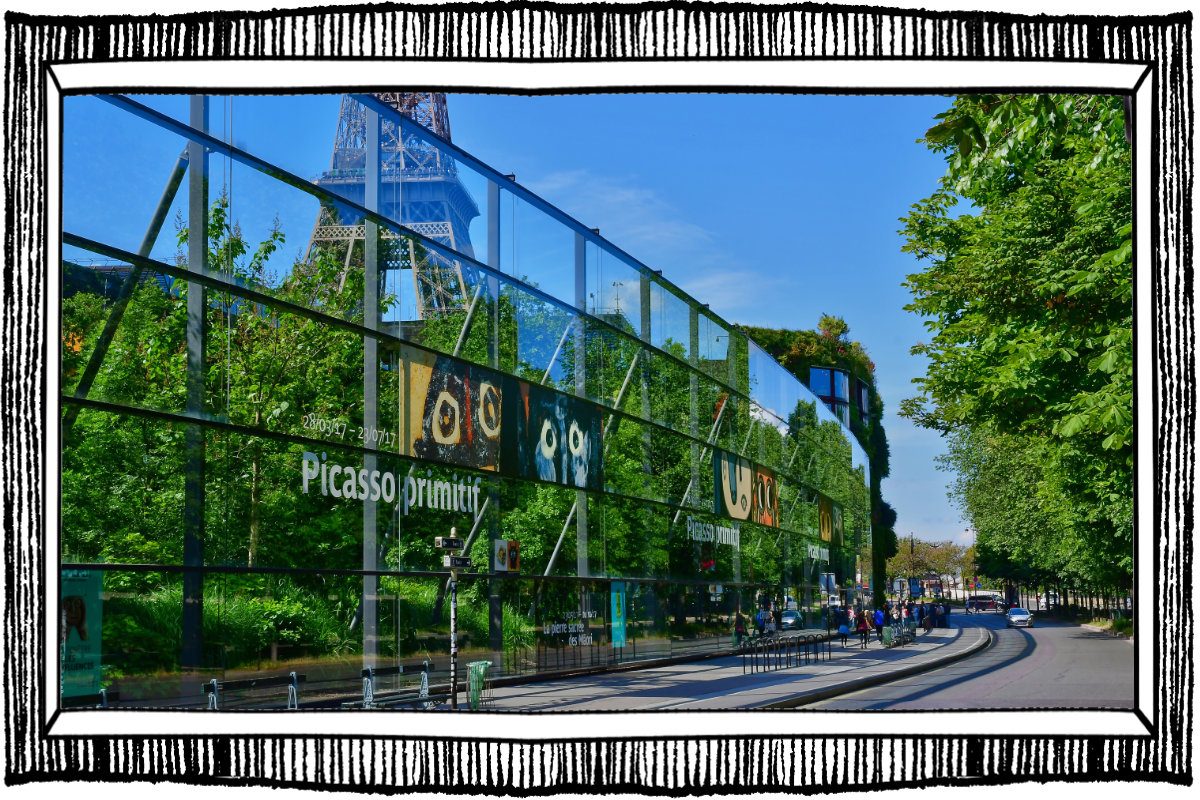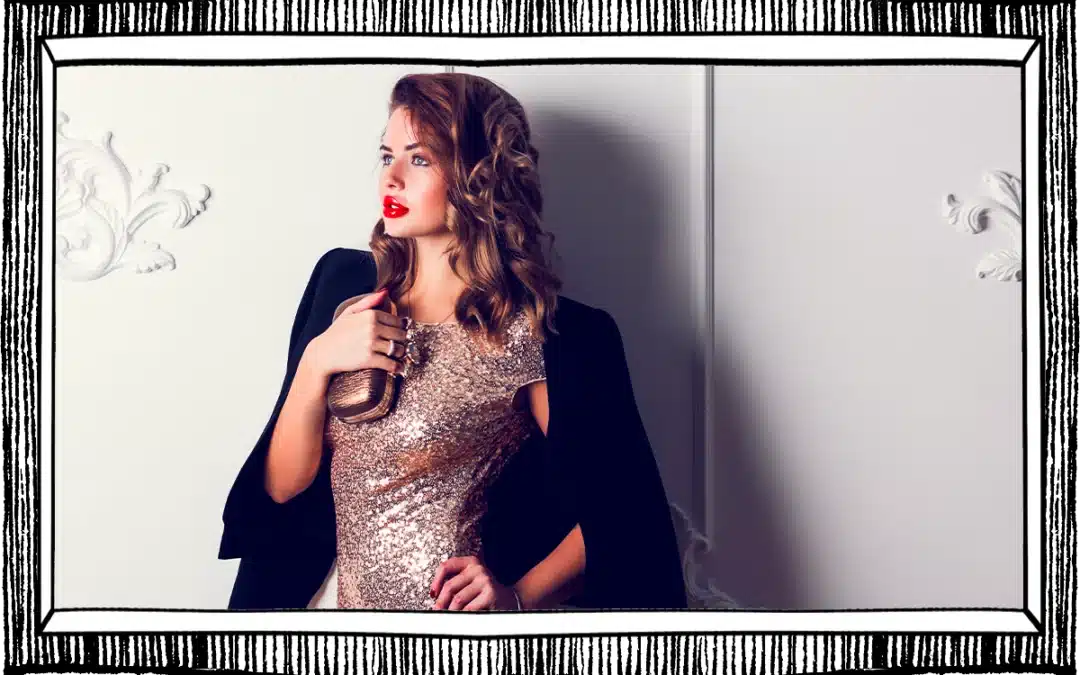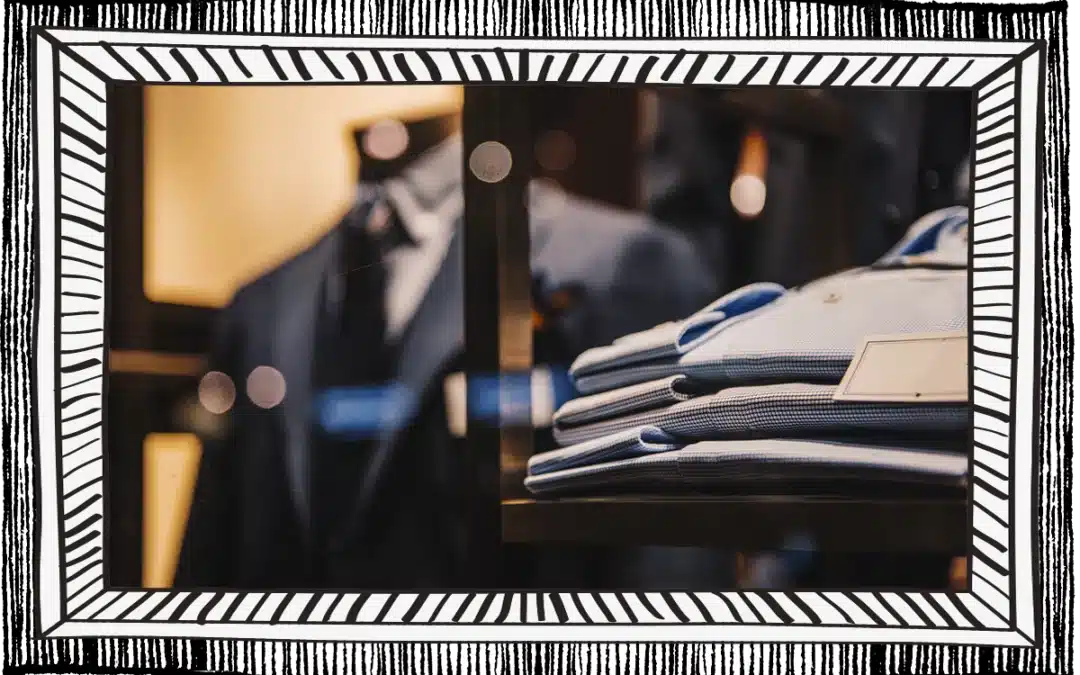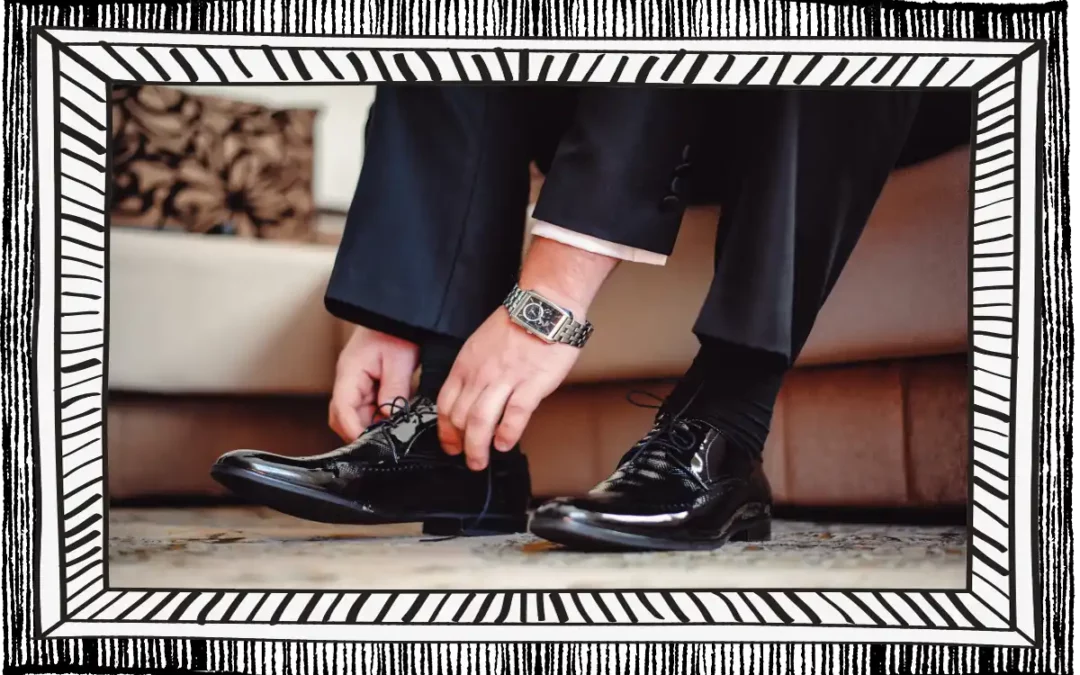To find out more, read our guide to an artistic day in the museums of Paris’s 7th arrondissement.
Musée du quai Branly-Jacques Chirac: fabulous treasures
You get spirited far away and open your mind to age-old, mystical civilisations. It’s very much about spirits and ancestral traditions, but contemporary issues as well.
The collection of 10,000 musical instruments
Music plays a unique role in the musée du quai Branly-Jacques Chirac. A stunning collection of musical instruments from all over the world sits proudly in a glass tower 23 metres high. This central key element designed by Jean Nouvel is his contribution to music, with this inventory of instruments from Oceania, South America and Asia. An architectural element that adds value and dimension to a collection unrivalled anywhere in the world.
These exhibits, very old and very precious as they are, have been restored thanks to patronage and donations from contributors.
An Aboriginal work of art that you can only see from the Eiffel Tower
Once again, Jean Nouvel has produced something to pique your curiosity and wow you. On the facade and walls of the museum, visitors to the musée du quai Branly-Jacques Chirac can behold works by artists drawing on their heritage of Australian aboriginal art, which goes back thousands of years, combined with creations by contemporary artists.
However, the wow factor lies in a new perspective on the work stencilled on the floor of the 700 m² terrace of the media library – one that you can only get by going up the Eiffel Tower. If you can’t make it up there, you can make up for it at Alain Ducasse’s rooftop restaurant and bar Les Ombres, with its breathtaking view of the Iron Lady. It’s almost like you could reach out and touch her. You can find more information in our selection of the most beautiful terraces in Paris.
The permanent exhibition
The exhibits on almost permanent display are drawn from collections from Africa, the Americas, Oceania, the Pacific Rim and Asia. There are 3,500 artifacts on display, some of which date back to the Neolithic period, and are too fragile to be displayed for too long. Hence they are switched out regularly.
Workshop roadshows
Art goes on the move in Paris and throughout the Île-de-France region and is exhibited in a groundbreaking way as it follows its route through the city. These roadshows are tours for works of art which are fragile and extremely rare. They help raise awareness of the musée du quai Branly – Jacques Chirac among Île-de-France residents. In particular, they draw in young people (aged 18-30), for whom admission to the museum is completely free of charge.
Photo prints: have a print of a work of art in your home
The musée quai Branly – Jacques Chirac allows you to order a photo of your favourite exhibit. But not only that. It also boasts a transoceanic photography collection, added to by a great many acquisitions over the years, of which you can also have prints made. Just imagine decorating your walls with exhibits that go back several millennia, or more contemporary ones, whose history jumps out of the photo to dazzle you and your guests. You can place orders with the photo agency RMN Grand Palais.
You may also be interested in : Discover the true secret history of Paris’s monuments
Safeguarding cultures is also about safeguarding the environment
This is a principled museum, green and verdant, with features unlike any other museum in the world:
- Its greened-over outside wall, which was completed back in 2004, is the largest of its kind in the world: 1,022 m², 22 x 47 m, 376 plant species. It should be construed as an “ode to living things”.
- The garden spanning 18,000 m² with unrestricted access, just opposite the Seine, is a gem which is home to 200 trees. In summer it is used to celebrate music and the arts, with artistic and cultural events and festivals. The garden extends under the museum by way of yet another ingenious design concept from Jean Nouvel. Moreover, it was this idea, the elevation on stilts of the musée du quai Branly – Jacques Chirac, that won him the contract for the fabulous project. Freeing up space on the ground made it possible to develop species that grow without light and virtually without water. This minimalist vision, involving purely eco-friendly agriculture, was the brainchild of landscape gardener Gilles Clément.
- The circular economy: ambitious partnerships make it possible to re-use costly supplies such as restoration and protection items. There are custom logistics in place to re-use shipping crates and the plinths of works of art.
Patronage and donation at the musée du quai Branly – Jacques Chirac
A great many generous donors provide the museum with works of art, either individually or through the société des amis du musée quai Branly – Jacques Chirac. This society has evolved into two circles: the Cercle Lévi-Strauss and the Cercle pour la photographie. Being in the circles brings you immeasurable cultural rewards if you’re an art afficionado: free admission, obviously, with a private tour accompanied by the curators. And best of all, special access to the research room and to the cabinet of precious items.




